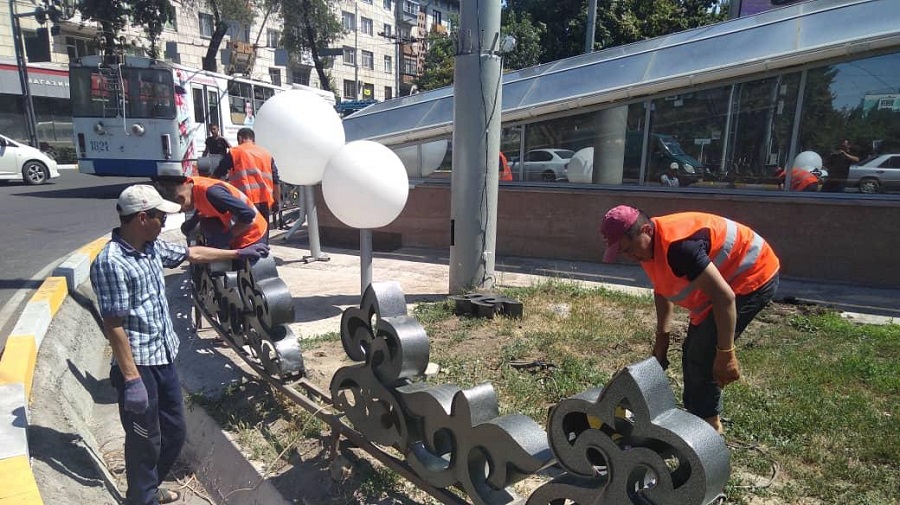Images of an Epic Scale.
In the 1970s, T. Sadykov created a granite monument—a bust of the twice Hero of Socialist Labor Z. Kainazarova (architect V. Kurbatov), which was installed on one of the most beautiful streets of the capital—Dzerzhinsky Avenue—while this famous Kyrgyz sugar beet grower was still alive. She provided the country with record harvests and raised six orphans from the war. In this simple and strong woman from the people, the sculptor saw a bright and integral nature. In the hard, unyielding stone, he carefully conveyed and monumentalized the appearance of the heroine—her proud head position, large yet soft facial features, and kind gaze. The individual appearance of the heroine emphasizes the traits of a woman of the new socialist era—her courage, social activity, and sense of self-worth. Here, an image of a large, epic scale is created.
An important direction in monumental sculpture in Kyrgyzstan, indicating its maturity, is the creation of portrait monuments of broad international significance and the expansion of creative contacts with sculptors from Moscow and Leningrad. Almost simultaneously, at the turn of the 70s and 80s, monuments were created in Frunze to the founder of Soviet literature M. Gorky and the outstanding Soviet scientist I. K. Skryabin, as well as to the great Russian scientist-traveler P. P. Semenov-Tyan-Shansky near the town of Rybachye in the Pre-Issyk-Kul region, and a monument to A. Navoi in the city of Osh.
A strong and distinctive accent is added to the environment and spiritual-aesthetic atmosphere of the capital by the granite monument to M. Gorky, created by Moscow artists—sculptor Yu. Chernov and architect G. Isakovich with the participation of Kyrgyz architect U. Alykulov. The monument impresses with an unexpectedly bold compositional approach, masterfully applied chopped plasticity. The figure of the writer, leaning against the ledge of the podium, is expressively asymmetrical, architecturally precise, and completed in an angular, even somewhat sharp movement, revealing a nervous, complex, and contradictory nature. The writer's likeness, carved in an extremely generalized manner with decisive strokes, is instantly recognizable and attractive due to its unconventional plastic interpretation. Located in a recreation area on a low pedestal, among flowerbeds and sandy paths, the monument resonates sharply with modernity, actively engaging the viewer in its emotional impact.
The monument to P. P. Semenov-Tyan-Shansky by sculptor V. E. Gorev (architect N. A. Sokolov, 1982) represents a sculptural group depicting a dismounted rider. This monument is created with a high level of professional understanding of plastic and spatial tasks. It remarkably succinctly and vividly conveys the character and emotional state of a brave traveler, humanist, and pioneering scientist. The figures of the human and animal, composed as an inseparable whole, are beautiful in their plasticity and modeling. The monument, placed near the road leading to the lake, is organically integrated into the nature of the mountainous region and is modern in its ideological and artistic solution.
In its content, it carries universal ideas of humanism, brotherhood, and friendship among peoples. The expressiveness of the monument is enhanced by a subtle, tactful stylization in the traditions of Petersburg plasticity of the 19th century, which gives the image a sense of the era in which Semenov-Tyan-Shansky lived and worked.













































